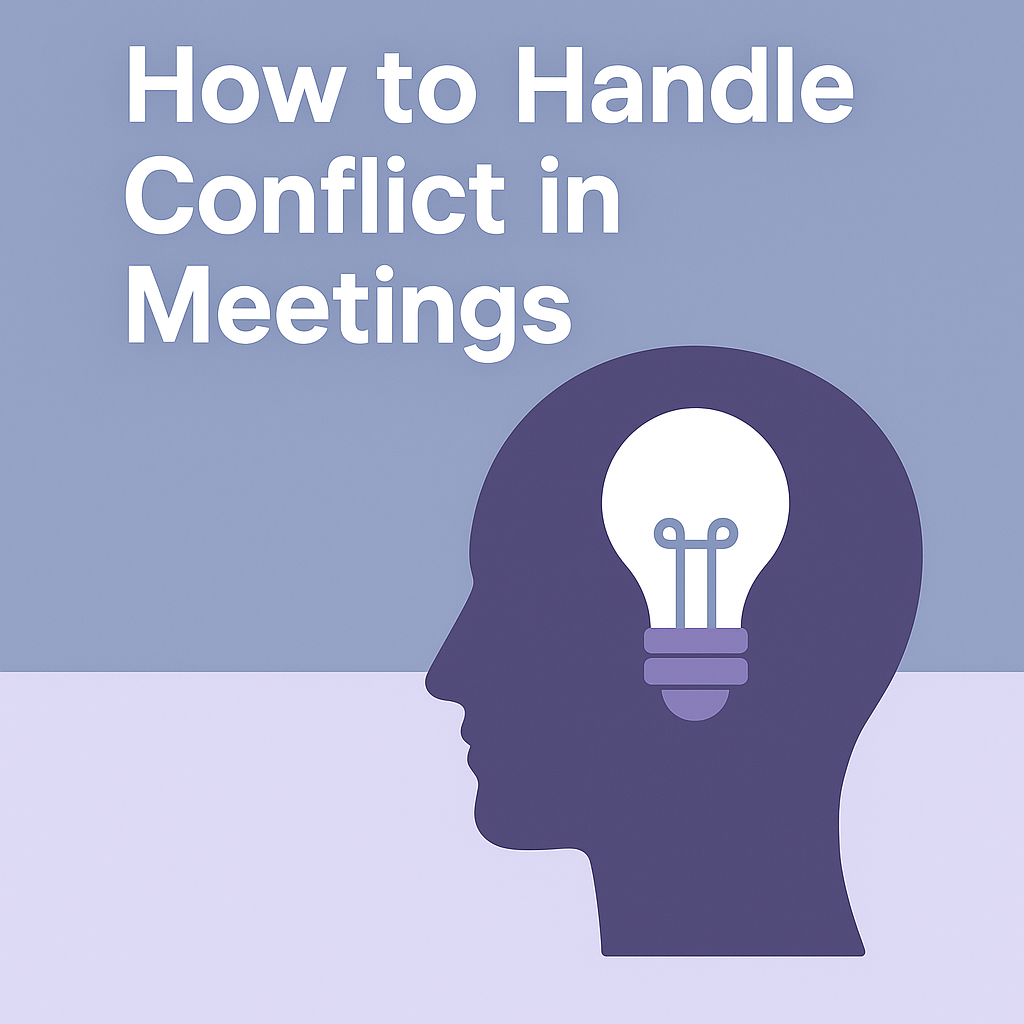Conflict in meetings is natural — but if left unchecked, it can derail progress and weaken collaboration across departments or global teams.
For professionals, where cross-cultural communication and time-sensitive projects are the norm, handling disagreements effectively is key to keeping momentum.
In this post, you’ll learn 4 proven steps to handle conflict in meetings so you can keep discussions productive and outcomes clear./
💡 Why It Matters
For professionals, unresolved conflicts in meetings can create tension, waste time, and weaken collaboration, especially across global or cross-cultural teams.
By mastering conflict management, you’ll be able to:
- Build trust and reduce misunderstandings.
- Keep discussions focused on solutions.
- Strengthen collaboration between colleagues.
4 Steps to Handle Conflict in Meetings
1. Acknowledge the tension early
Don’t ignore it. Calmly state what you notice.
👉E.g., “I sense there’s some disagreement on the timeline. Let’s pause and address it together.”
2. Focus on the issue, not the person
Keep the conversation professional by steering away from blame and back toward the shared project goal.
👉This is especially important in geographically distributed teams where tone can be misread.
3. Summarize agreements clearly
End the discussion by confirming what everyone does agree on before moving forward.
👉E.g., “So, we’re aligned that the next data pull will be ready by Thursday.”
4. Adapt to cross-cultural dynamics
In global teams, communication differences matter. Be mindful of tone, pace, and inclusivity.
👉 Adjust your approach to respect cultural differences and ensure everyone feels heard.
Pro Tip
Use neutral, inclusive language like:
“Let’s explore this further.”
“What option would work for everyone?”
This reduces defensiveness and keeps the focus on problem-solving rather than personal disagreements.
Quick Example in Action
Conflict: Deadlines slipping.
Step 1: Acknowledge → “We’ve had delays on the last two reports. Let’s talk about why.”
Step 2: Focus on the issue → Identify unclear priorities.
Step 3: Summarize → “We’ll align deadlines by Friday.”
Step 4: Cross-cultural awareness → Ensure all voices are heard before finalizing.
📌 Next Steps
At your next team meeting, try:
- Rephrasing critical feedback into neutral observations.
- Acknowledging tension early before it grows.
Conflict handled well can become a springboard for stronger teamwork and innovation.
🔗 Further Resources
Essential Work Habits Every Professional Needs
👉 Discover 5 simple daily habits that boost focus, reduce stress, and keep you consistently productive.
Critical Thinking & Problem-Solving at Work
👉 Learn a practical 5-step framework to solve problems faster and make smarter decisions at work.
For a deeper dive take a look at the HBR article on how to navigate conflict with a co-worker https://hbr.org/2022/09/how-to-navigate-conflict-with-a-coworker
❓FAQ
Q: What’s the first step to handle conflict in meetings?
A: Acknowledge the tension early and state it clearly without blame.
Q: How do professionals resolve disagreements effectively?
A: Focus on the issue, not the person, and summarize agreements for clarity.
Q: Why is conflict resolution important in professional meetings?
A: It reduces wasted time, improves collaboration, and helps teams stay aligned on shared goals.
